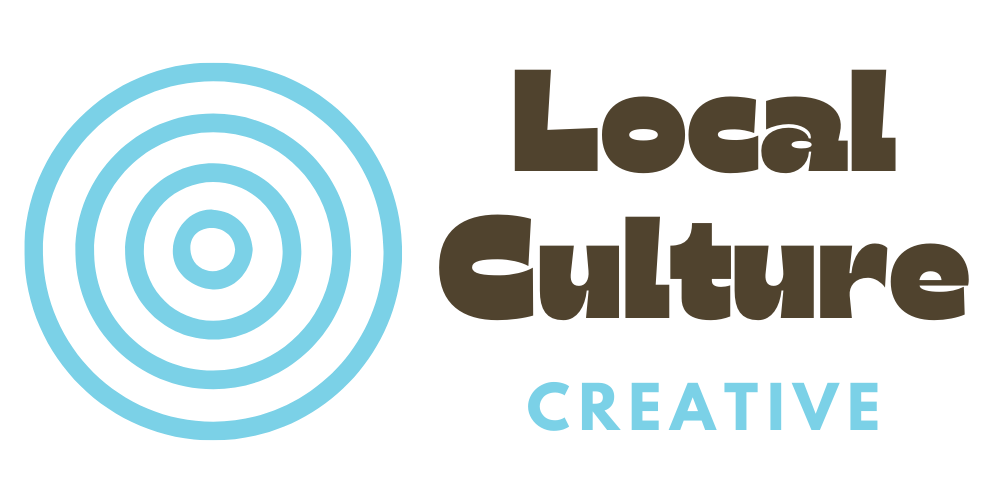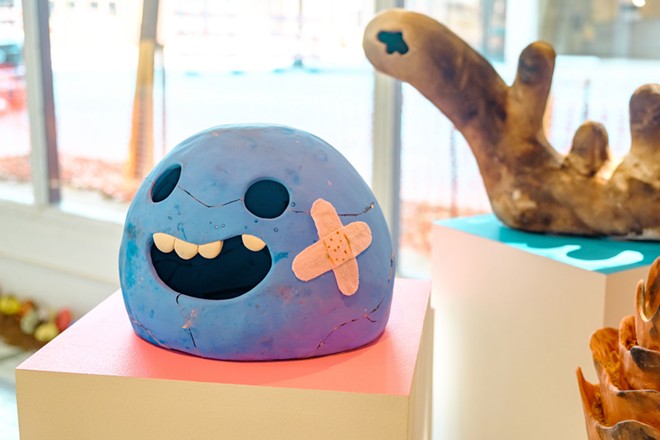
Artists frequently use their websites as a platform to present themselves as accomplished professionals with zero evidence of personality.
On his quirky, colorful website, San Antonio's Michael Guerra Foerster turns that pretentious trend upside down by using the juvenile font Comic Sans — in bubblegum pink, no less — and a headshot that shows him grinning in a bowtie with his arms covered in wet clay slip.
Displayed in bubbles above his head are examples of his sculptural "Floops," smiling creatures partly inspired by the cartoons of his youth — Pokemon, Yu-Gi-Oh! and Adventure Time among them. In stark contrast to the playful vibe, Foerster's artist statement explains that his work actually explores dark and pensive issues including grief, trauma and "the incredible toll of the human experience." That dichotomy — silly versus serious — is a hallmark of his practice, as is a tongue-in-cheek approach that pokes fun at the very trappings of art.
Born in Seguin and raised in San Antonio, Foerster had a less-than-perfect experience at Lutheran High School. However, he cites two important takeaways from those years: he met his longtime girlfriend Sarah Saeger and also discovered ceramics there.
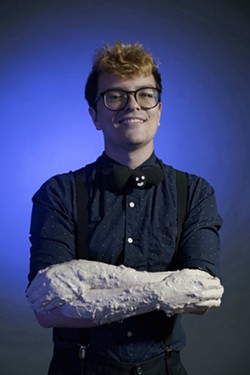
"I immediately knew that's what I wanted to do, which was such an interesting feeling," Foerster told the Current. "It was like love at first sight."
After high school, Foerster enrolled at the University of Texas at San Antonio and immersed himself in ceramics. Upon graduation, he started interning at the tuition-free youth arts program SAY Sí, where he now works as an instructor. Curiously, his first solo exhibition out of college was not ceramics but a soft sculpture show.
"I was really struggling to figure out how to continue making ceramic work without the facilities and equipment," Foerster explained. "So I continued working in a similar style, just doing soft sculpture. And that was an important experience — to work with a different medium but with similar ideas and concepts. ... You can create a ceramic object and it's so different from a stuffed animal. The things I make now are hollow — the material is hard and rigid — whereas a soft sculpture is almost just a toy. So, I went from making these things that appeared to be toys to things that literally were toys. That was a really fun show. There were tons of kids coming through ... There was stuff hanging from the ceiling and people were reaching to try to grab stuff. People brought their dogs and the dogs wanted to grab things too."
Foerster first caught the Current's attention last year with "Every Time We Say Goodbye," a memorable Artpace exhibition comprised of ceramic Floops he pit-fired — an ancient technique he describes as violent, spontaneous and nostalgic.
"I just love that process because it reminds me so much of camping when I was a kid," Foerster said. "You essentially build a campfire on top of your work ... and the pieces will accumulate ashy, sooty marking on them."
Foerster also used that exhibition as an opportunity to introduce a concept that's become important to his process: giving his work away for free. Assisted by a Floop filled with carnival tickets that could be redeemed at the reception desk, Foerster distributed all the smaller pieces long before the show closed.
"I've always felt weird about selling work," Foerster admitted. "It might be the capitalistic associations of putting your heart and soul into something and then putting a price tag on it. It's kind of off-putting to me."
For his followup exhibition "I Remember," hosted at Brick Gallery last December, Foerster opted not to fire his work at all, rendering the pieces incredibly fragile and — if placed outside — primed to disintegrate and return to the earth. Not only did he give work away at that show, he destroyed all that remained and upcycled the clay for future projects.
Now preparing for a busy summer punctuated by a stint studying at Arrowmont School of Arts and Crafts in Tennessee and a residency at Watershed Center for the Ceramic Arts in Maine, Foerster spoke to the Current a few days after leading a seed bomb workshop held on Earth Day at Artpace.
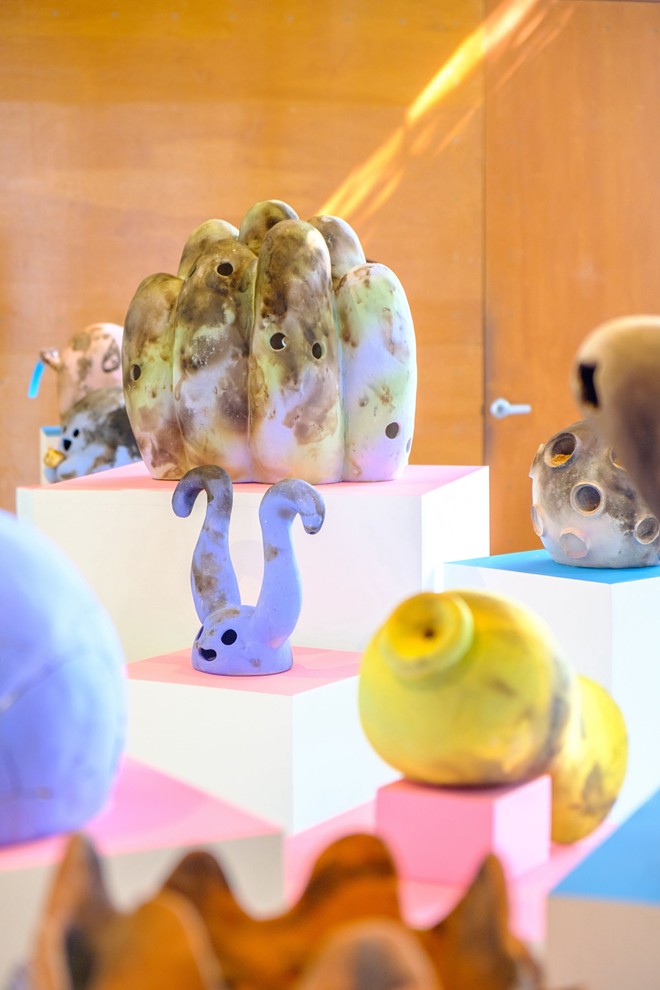
When did you start giving work away and how did that come about?
It's been a process. For a long time, I've been thinking about pricing and selling. That's a huge part of any art practice, really. But I feel that in ceramics, it's really pushed to make work that sells, make functional, utilitarian objects and to get into the art markets, art fairs, put up booths, sell stuff, make stuff, production — all that stuff. I was really turned off by all of that. So, it's kind of a reaction to that. But the first time was at the show at Artpace last year. A lot of people have really strong reactions to it, because they're not expecting to come away with something that somebody actually made from an art show. ... And I think that is a really strange experience. And it's a lovely experience too — that whole relationship of me giving something to you and you taking it home and continuing to live with it and use it. That's my favorite part of selling is that somebody wants your piece and keeps it and interacts with it. Selling is like a gate between those interactions.
If you didn't have a day job, do you think you would still entertain that idea?
So, that's another thing. The reason that I can do this type of work is that I apply really vigorously for funding and grants. I totally understand why people sell their work — obviously people have to pay their bills and they have to eat. I'm very lucky to have a job and a partner and that we can sustain our livelihood — but also that I've had mentors in my life. I've had schooling that showed me how and where to apply for grants and where to look for grants. And I've been lucky enough to actually receive money that can fund this stuff. I got the San Antonio Individual Artist Grant that they just started a couple of years ago. The first time they did it, I got it. And that was what funded the work at Artpace. If I hadn't gotten that money, I definitely wouldn't have been able to do that.
I found it amusing that you use Comic Sans on your website.
I've gotten tons of comments about that. When I first decided to really ham it up, my resume was in Comic Sans — and like 10 different colors. I don't think that did so well. Just because it's such a silly, stupid font, I was drawn to it. But it's also a font that has been proven to be more accessible to people with dyslexia. I didn't know that [at first] but when I learned about that I was like, "Wow, people are hating on this font — but this font is helping people."
In your artist statement, you mention grief and traumatic experiences, but your work feels very playful and exuberant. What can you share about that dichotomy?
A lot of the work that I make is a reaction or response to those kinds of events that happen in my life. Without sharing too much, it really talks about feelings of abandonment. ... There was a lot of death that happened in my life up to this point. Through this work, I've tried to address those things by poking fun at things. I've always been a class clown. So that's kind of a way that I cope with stuff is to just make jokes. I also am trying to talk about people I love, and talk about them in a way that honors them. [My work] talks about them in a way that [combines] their image with images that I associate really positively from my childhood. So, in doing that, I've tried to heal from those things. ... It's not quite so simple. It's super complicated, the whole healing process. ... I've talked about how giving away things and making these super-happy forms, I was trying to reconcile some things. And I was trying to heal myself.
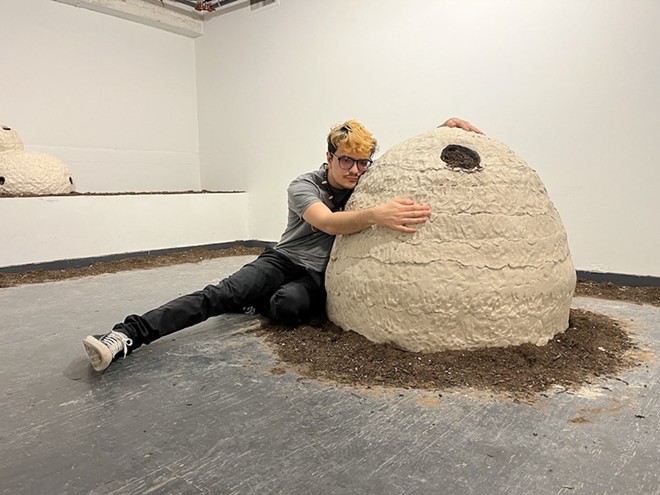
Does your decision to not fire work and let it sort of return to the earth relate to what you're trying to convey?
Absolutely. So, I had a show at Brick in December where I really wanted to play with those ideas. I wanted to let go of that shiny-new-toy kind of look that a lot of my work had before. So, I left it super-marked with my own fingerprints. There were no smiles involved in the work — except for the work I gave away. I [was] maybe thinking more realistically about the relationships that I've had, and the things I've gone through. And about the lifecycle, how things change over time and how healing happens over time. And [how] things that exist go from existing in such a big, major way — and then return to nothing. But because it's clay, it becomes something again, someday. [I was thinking about] this kind of resurrection, lifecycle, history of the work. I've decided that the work [I showed at Brick], I'm gonna try to not fire it and continue to reuse it. In that way, the medium gathers those experiences — it becomes this, and then it becomes something else.
Does that mean that you'll actually reuse the pieces from your Brick show once they disintegrate?
I'm in the process of reclaiming all that stuff. I've reclaimed a ton of it. After that show ended, me and Sarah went in with sledgehammers and broke everything down, which was a weird, cathartic experience. Because I'm like, "I created you, but you're part of me, and now I'm gonna break you down again — to nothing." I felt really weird about it because there's this attachment to the things you create. So, we broke it all down, and we shoved it in buckets and into boxes. I've reclaimed about 300 pounds so far. And I still have like 300 left. ... [Unfired clay is] almost infinitely recyclable. I'm gonna have a show in February at Contemporary at Blue Star, and I'm gonna use this same clay to make big, unfired clay sculptures.
Follow us: Google News | NewsBreak | Instagram | Facebook | Twitter















